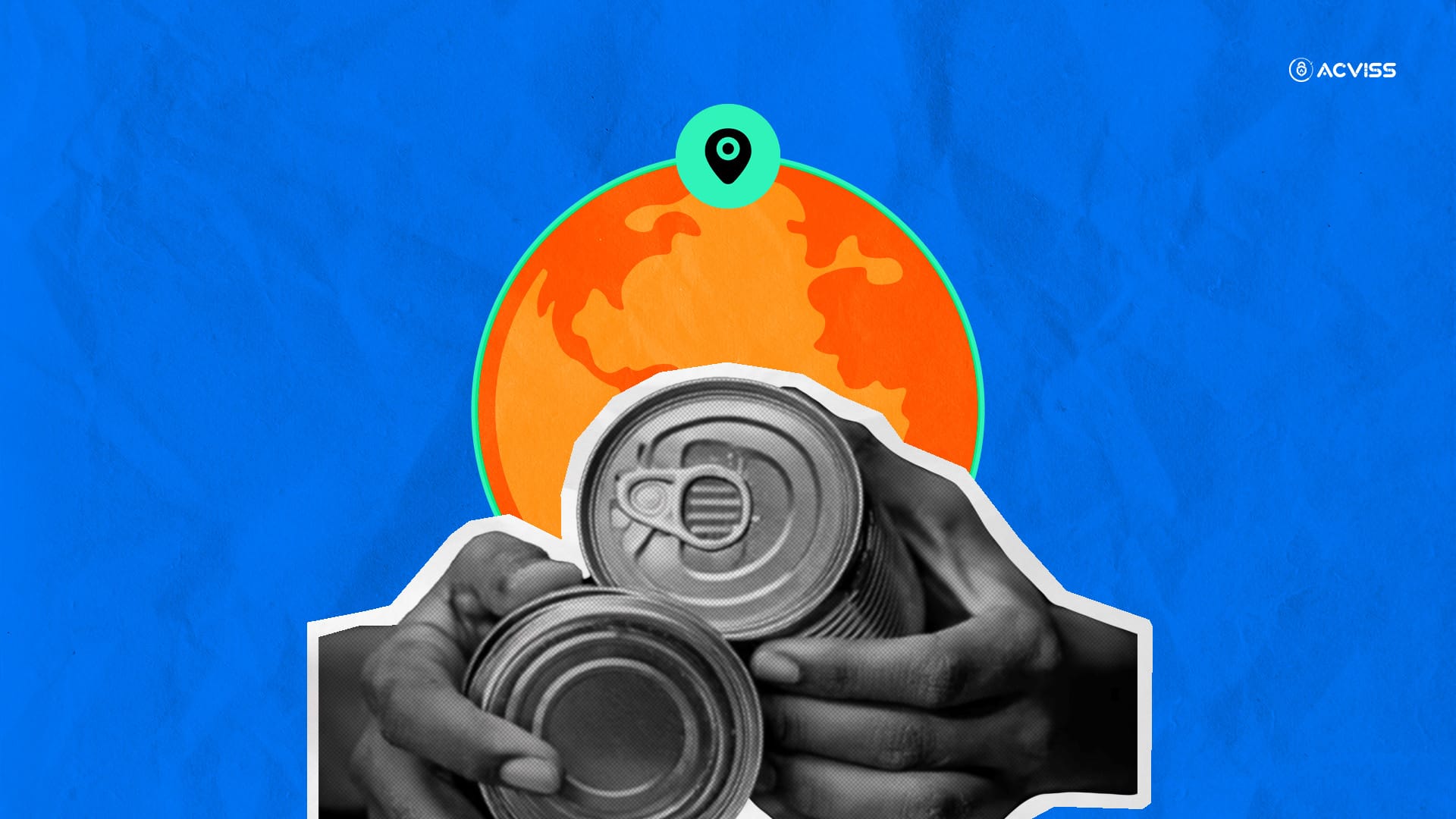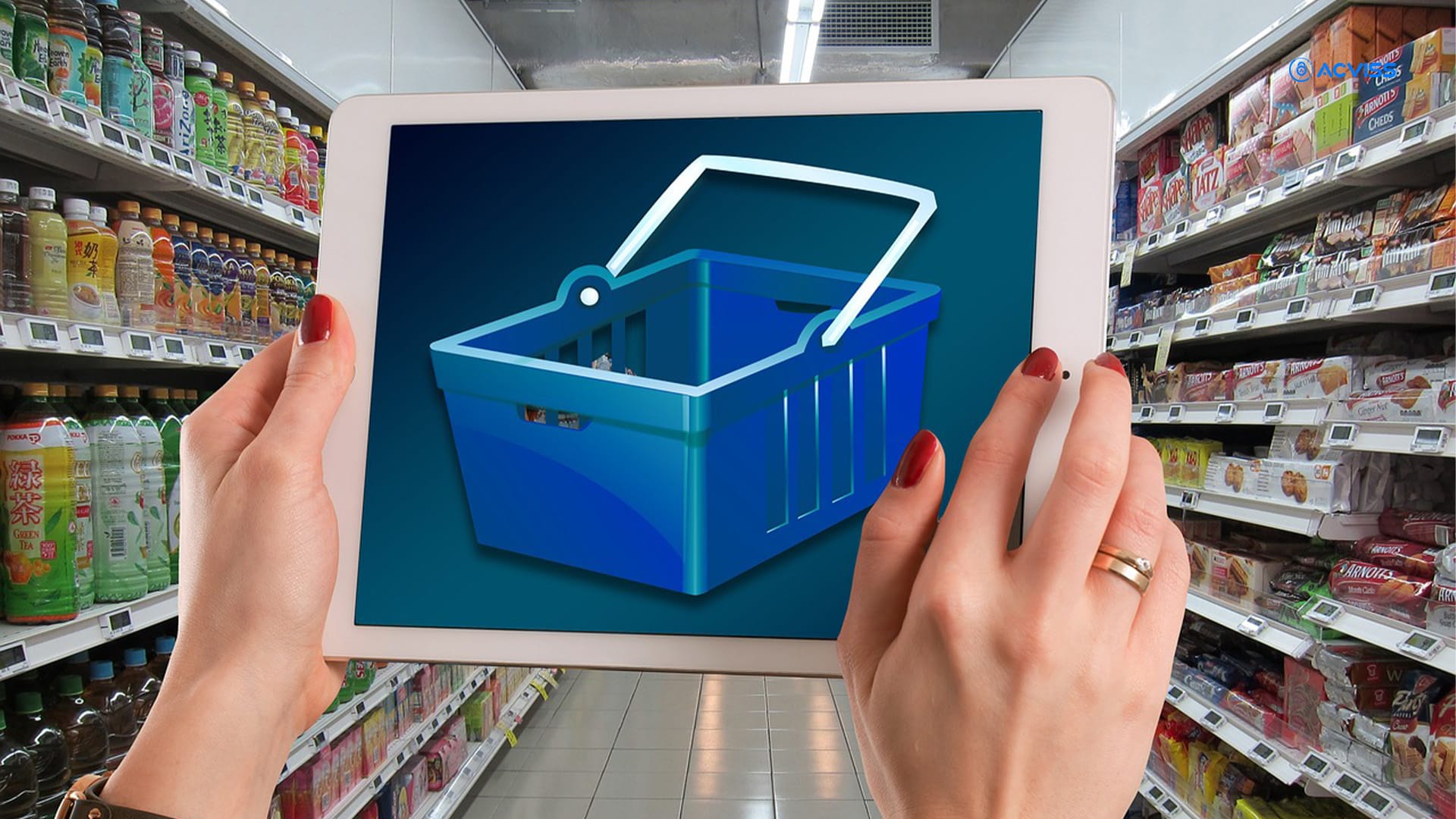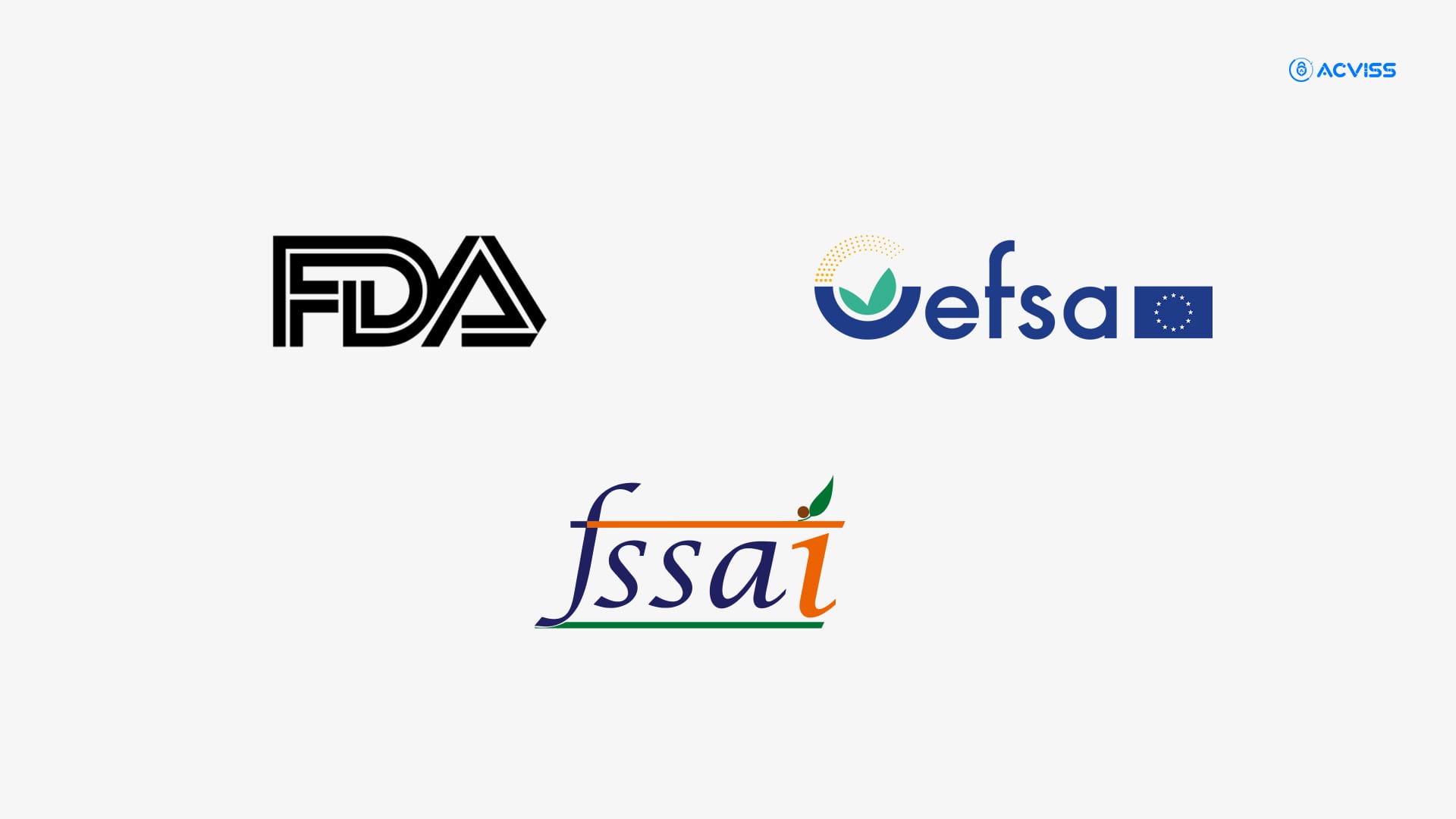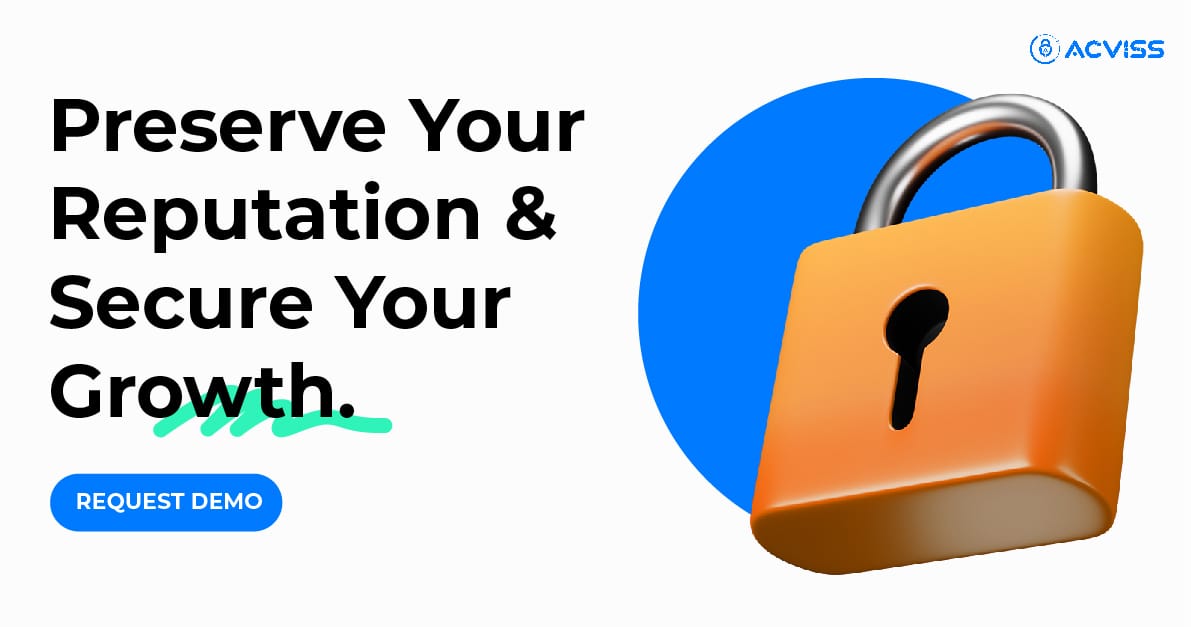Food Counterfeiting in the Global Supply Chain: Challenges and Solutions

Imagine you're a supply chain manager whose task is to ensure the authenticity of the food products your company distributes globally. Suddenly, you discover that a batch of luxury coffee beans or premium spices has been replaced with counterfeit products. This is a major threat to your brand's reputation, customer trust, and consumers' health.
Well, this isn't just happening in the imaginary world but also in reality. Food counterfeiting is a growing concern that infiltrates the global supply chain, costs billions of dollars yearly, and compromises food safety. Counterfeit products can slip through even complex international supply networks, raising concerns for businesses, consumers, and regulatory bodies alike.
In this blog, we'll explore how counterfeit food products disrupt global supply chains and threaten consumer health and what can be done to address these challenges effectively.
What Is Food Counterfeiting?

Food counterfeiting refers to producing and selling fake or mislabeled food products. These food products are designed to deceive consumers about their authenticity. This can involve substituting high-quality ingredients with inferior ones or misrepresenting the origin or nature of the product.
People often misunderstand counterfeit with adulterated foods. It is important to understand the difference. Counterfeit foods are entirely fake or mislabeled, while adulterated foods have genuine products mixed with harmful or low-quality substances.
Examples include counterfeit olive oil, honey diluted with sugar syrups, and fake organic labels on various food items.
Challenges of Food Counterfeiting in the Global Supply Chain
The global food supply chain is very complex and, thus, has various challenges regarding food counterfeiting. Below are some key challenges:
1. Lack of Transparency Across Borders
With numerous stakeholders and varying regulatory frameworks across countries, tracking products from their source to the end consumer becomes difficult. The absence of a unified global standard makes it easy for counterfeit goods to slip through unnoticed.
2. Inadequate Enforcement in Developing Countries
In many developing countries, the enforcement of food safety laws is inconsistent or poorly managed. Limited resources and weak regulatory oversight create opportunities for counterfeit products to enter the market with little consequence.
3. Rise of E-commerce

The growing e-commerce industry provides new channels for counterfeit food products to be sold. Online platforms often need more rigorous quality checks applied in traditional retail, allowing fraudulent items to bypass scrutiny.
4. Fragmented Supply Chains
Modern tracking and authentication often involve multiple intermediaries, from farmers and manufacturers to transporters and retailers. Each link in the chain creates potential gaps in traceability, making it harder to identify the point of contamination or fraud.
5. Technological Gaps
Many parts of the global food industry still rely on outdated systems for monitoring and reporting, which can lead to data inaccuracies or delays in detecting fraudulent activity. Advanced technologies like blockchain are not yet widely adopted, particularly in developing regions.
Global Regulatory Responses to Food Counterfeiting

Food counterfeiting is a global issue that has led to the creation of regulatory frameworks across various countries. Here's an overview of the major bodies and their efforts:
1. FDA (Food and Drug Administration) - USA
The FDA enforces strict food safety standards under the Food Safety Modernization Act (FSMA), focusing on preventive measures. The agency collaborates with customs and border protection to prevent counterfeit foods from entering the US. They also provide guidelines for manufacturers to ensure food traceability.
2. FSSAI (Food Safety and Standards Authority of India) - India
In India, FSSAI plays a pivotal role in food regulation through the Food Safety and Standards Act of 2006. It enforces food labelling, monitoring, and quality checks. FSSAI has also launched various digital tools like mobile apps to ensure public reporting and transparency in food safety violations.
3. EFSA (European Food Safety Authority) - Europe
EFSA operates under the General Food Law Regulation and works closely with member states in the European Union. It ensures food safety by monitoring food fraud and implementing strict rules on product origin, labelling, and traceability. The EU also coordinates with Europol and Interpol for cross-border cooperation to fight food fraud.
4. International Cooperation
To combat food counterfeiting at the global level, countries collaborate under organisations such as the Codex Alimentarius Commission and the World Health Organization (WHO). These international efforts create standards for food safety and ensure that countries can work together to share data and technology to prevent fraud in supply chains.
5. Challenges in Enforcing Laws
Enforcing food safety laws across borders is difficult due to differences in regulatory standards. While developed countries have advanced systems, developing nations may lack resources or infrastructure for proper enforcement. Additionally, criminals often exploit loopholes in cross-border trade, making cooperation between customs, law enforcement, and regulatory bodies crucial.
How Blockchain Technology Is Transforming Food Traceability
Blockchain technology is revolutionising how companies ensure the quality of the food supply chain. Blockchain technology allows for real-time tracking and authentication of food products by creating a digital, immutable ledger. This ensures transparency from production to retail.
1. Supply Chain Quality
With the help of blockchain, every step of the food supply chain, from farmers to retailers, is recorded in an open, unchangeable ledger. This prevents any manipulation of data and ensures accountability across all stakeholders. Any disruption, contamination, or tampering can be immediately traced back to its origin.
2. Authentication and Traceability
Blockchain can verify the authenticity of food products. This can significantly reduce the chances of counterfeit goods entering the supply chain. Each transaction is logged, offering a complete history of the product's journey. Consumers can verify the origin, handling, and certification of their food items, thus fostering trust in the global supply chain.
3. Origin by Acviss - Solutions for Food Authentication
Acviss, with its robust anti-counterfeiting technology, enhances food traceability and authenticity. Origin by Acviss leverages blockchain technology to secure supply chains, ensuring the authenticity of food products by offering end-to-end traceability for brands looking to safeguard their product lines.
Blockchain can ensure data transparency and integrity. Combined with solutions like Origin by Acviss, blockchain technology is a comprehensive solution to combat food fraud and strengthen supply chain security.
Solutions to Combat Food Counterfeiting
Although food counterfeiting is a significant issue globally, supply chains are more secure now with advancements in technology combined with proactive measures. Below are some solutions to combat this growing crisis:
1. Technological Advancements
- Traceability Systems: Blockchain and the Internet of Things (IoT) are leading technologies in ensuring food traceability. These systems allow every step of the supply chain to be documented, ensuring transparency. With IoT sensors, it's possible to monitor the condition and movement of food items in real-time, reducing the chance of counterfeiting.
- Smart Packaging Solutions: Integrating technologies like QR codes and RFID tags into packaging enables consumers and supply chain participants to easily verify the authenticity of products. QR codes, when scanned, can provide detailed information about the product's origin, production process, and certification, making it harder for counterfeit goods to pass through the supply chain unnoticed.
2. Public-Private Partnerships
It is essential that governments and private entities come together and work together. It is essential to create an effective regulatory framework and strengthen enforcement measures. Public-private partnerships (PPP) can lead to shared resources, increased knowledge, and better tools for monitoring and stopping counterfeit food products. Governments can introduce stricter regulations, while private companies offer innovative solutions like Acviss' authentication technologies.
3. Consumer Awareness and Education

A crucial part of combating food fraud is educating consumers. By raising awareness of how to identify counterfeit products, consumers can actively participate in reducing the demand for fake goods. Simple measures, such as encouraging buyers to check for QR codes or other traceability markers, can significantly impact the process. Education campaigns should focus on teaching consumers about the risks of counterfeit food products to their health and the economy.
Technological innovations, combined with regulatory efforts and informed consumers, offer a robust defence against food counterfeiting. By enhancing the visibility and accountability of every stage of the supply chain, these solutions create a secure environment for both consumers and businesses..
Future Trends in Preventing Food Counterfeiting
As food counterfeiting is getting common nowadays, technologies and strategies used to combat it are also evolving. Some of the key emerging trends include:
- AI-Powered Traceability Systems: Artificial Intelligence (AI) will play a crucial role in food safety. AI can analyse complex data across the global supply chain, identifying patterns of fraudulent activity and optimising traceability measures.
- Increased Regulatory Harmonisation: To address global food fraud more effectively, nations are working towards harmonising their regulations. This would ensure consistency in food safety laws across borders, making it harder for counterfeiters to exploit legal loopholes in different countries.
- Global Cooperation: Organisations like Interpol and the World Health Organization are driving cross-border collaboration to combat food fraud, with nations sharing data and intelligence on counterfeiting networks.
The Real Threat
Food counterfeiting is clearly a real threat. Brands, consumers, and governments lose when counterfeiting sneaks into the supply chain.
Looking ahead, the future of food safety relies heavily on integrating advanced technologies and stronger regulatory frameworks. The hope is that with ongoing cooperation between governments, businesses, and technology innovators, the food supply chain will be increasingly secure from counterfeit threats.
Wondering where to start with your anti-counterfeit strategy? Get in touch with our experts today and join the ranks of global leaders to secure your brand against counterfeits, pilferage and supply chain exploitations.
